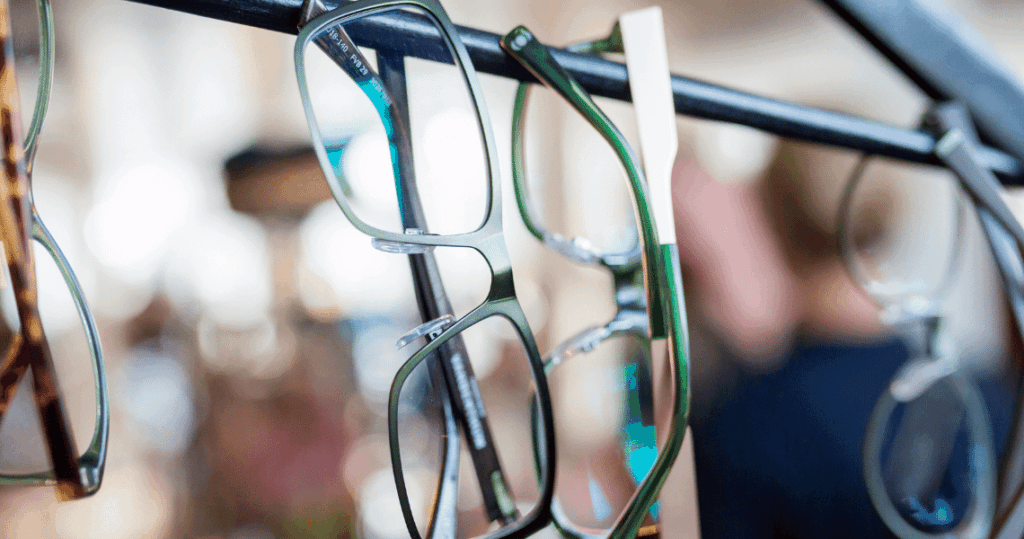What is blue light?
Blue light part of the visible light spectrum, it can be divided into two bands: Blue-violet light which is 415-455nm and blue-turquoise light which is 465-495nm.1 Some studies also reference high energy violet-blue light as 400-450nm.2
What does blue light do?
When blue-violet light is detected by the light receptor cells of the eye in the retina it is absorbed quicker than any other type of light due to its high photon energy.3 It therefore can cause a cascade effect of retinal damage, and later AMD.3
Where does blue light come from?
Light emitted from the sun generally has approximately 25-30% blue-violet light and carries the highest damage effect.1 Other sources of blue-violet light are from fluorescent lights, which emit approx 26% blue light, LEDs which emit 35% and OLED or AMOLED digital device screens.4-5 The blue light emitted from OLED or AMOLED screens in digital devices increases at closer distances and for longer durations.5

Is it all bad?
Blue-turquoise light however is actually beneficial to the eye and as it assists in visual acuity and colour vision, it improves contrast and pupillary reflexes as well as synchronises our circadian rhythms. The body’s circadian rhythm is responsible for alertness in the morning, sleepiness at night as well as regulation of memory, mood and general hormonal balance.1
“The eye not only sees but also functions as a clock”6
Hence, only a small range, not all, of the blue light wavelengths should be filtered to ensure normal function such as pupil constriction, which needs light at 470nm, still occurs.
Additionally, the natural ageing process of lens discoloration means with age the transmission of blue light drops from 20% to 10% at age 70.4 However, the bodies ability to repair damage from blue light also drops, so the retina remains susceptible to damage even with reduced exposure.4

What is the research around blue light?
A comprehensive review found there were limited high quality studies testing eye strain, fatigue, eye disease risk and sleep quality when using blue blocking lenses.7 One study found high blue-blocking lenses compared to low blue-blocking lenses when used before bed found an improvement in self-reported sleep quality.7

Summary
The sun has the highest emittance of blue light, so protecting your eyes when in sunlight is the most important to prevent damage from the blue-violet wavelength of blue light. Blue light should be avoided up to approx 455nm but not filtered beyond 465nm as it is beneficial beyond this.5 There is limited research around the effects of blue light from non-sun light sources and screens, especially in regards to disease and eye strain. The best quality evidence shows blue-blocking can be beneficial before bed, which can be managed with spectacle lenses or “night mode” on digital devices.
One last note…
“Just be aware there is currently no specific Australian standard for blue light filtering glasses or screen protectors, according to the Royal Australian and New Zealand College of Ophthalmologists (RANZCO).”8
RANZCO
Meaning, if your particular situation means you may benefit from blue light filtering lenses, be sure to get them from a reputable source (like us) to ensure the lenses are high quality and actually doing what they say they should!
We use lenses from Nikon, Hoya and Essilor each with their own blue light coating or lens filters available.
Book an appointment with one of our Optometrists for more information.

References
- Dunbar M, Melton R. The lowdown on blue light: Good vs bad and its connection to AMD. Review of Optometry. www.reviewofoptometry.com/continuing_education/tabviewtest/lessonid/109744/dnnprintmode/true/?skinsrc=%5Bl%5Dskins/ro2009/pageprint&containersrc=%5Bl%5Dcontainers/ro2009/blank. November 21, 2013. Accessed March 18, 2016.
- Giannos SA, Kraft ER, Lyons LJ, Gupta PK. Spectral Evaluation of Eyeglass Blocking Efficiency of Ultraviolet/High-energy Visible Blue Light for Ocular Protection. Optom Vis Sci. 2019;96(7):513-522. doi:10.1097/OPX.0000000000001393
- Sparrow JR, Boulton M. RPE lipofuscin and its role in retinal pathobiology. Exp Eye Res. 2005;80(5):595-606.
- https://www.essilorpro.com/content/dam/essilor-redesign/product-resources/crizal/Blue-Light-Roundtable_White-Paper.pdf
- https://www.pointsdevue.com/article/blue-light-what-are-risks-our-eyes
- https://www.pointsdevue.com/article/what-role-science-and-clinical-practice-should-play-prevention-ocular-problems-generated-uv
- Lawrenson JG, Hull CC, Downie LE. The effect of blue-light blocking spectacle lenses on visual performance, macular health and the sleep-wake cycle: a systematic review of the literature. Ophthalmic & physiological optics : the journal of the British College of Ophthalmic Opticians (Optometrists). 2017;37(6):644-654. doi:10.1111/opo.12406
- https://www.choice.com.au/health-and-body/optical-and-hearing/optical/articles/blue-light-glasses


